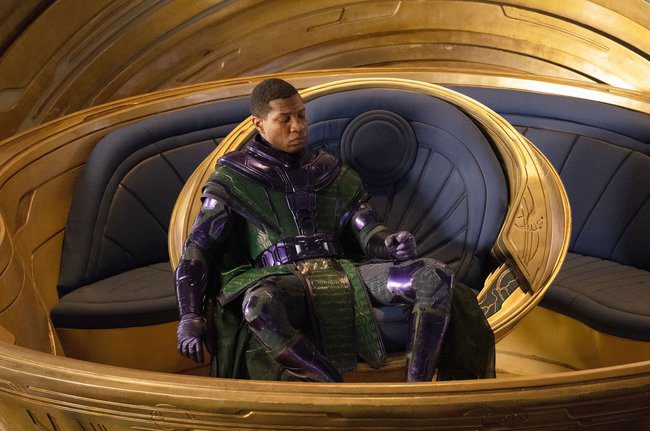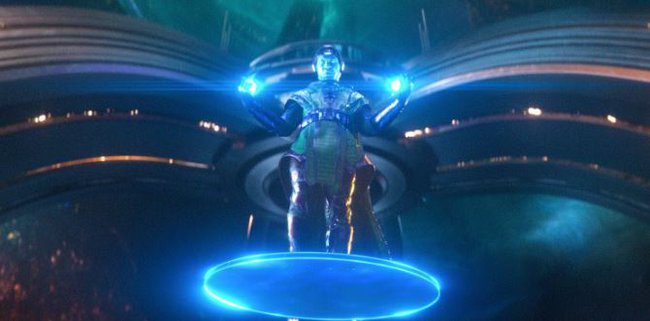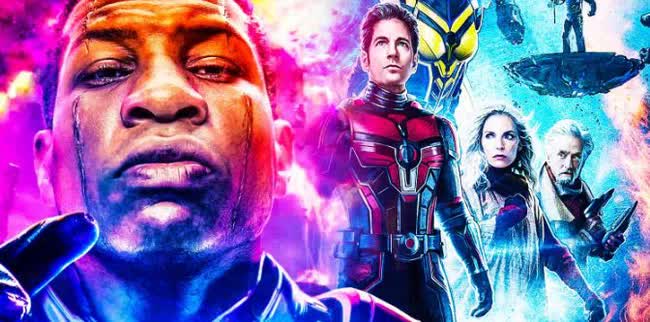The next major installment in the Marvel Cinematic Universe (MCU) officially introduced Kang the Conqueror in the blockbuster Ant-Man & The Wasp: Quantumania, which premiered on February 17. This character, more accurately, represents many variations of the same entity in the expansive multiverse.
Kang is being viewed as the “next Thanos” of the MCU, signifying a significant threat to many major superheroes, including the Avengers. Ant-Man & The Wasp: Quantumania effectively showcased this threat and even revealed Kang’s identification as a formidable foe for various members of the superhero team during his conquest across the multiverse, including the mighty Thor.
This raises the question of how formidable this villain truly is and how he differs from traditional Marvel comic book villains.
The Source of Kang’s Power in Quantumania
Ant-Man & The Wasp: Quantumania does not delve deeply into the origins of Kang’s superpowers. However, the story hints at the origins of this character, as well as several details that could help audiences understand the essence of this powerful character.
Similar to He Who Remains, the “final boss” of the first season of Loki, and various other incarnations, Kang originates from the 31st century, a time when science and technology have advanced tremendously compared to a thousand years prior—specifically, the present-day MCU. This advanced technology has enabled Kang to possess “superpowers” that far exceed the comprehension of people in the 21st century. In other words, the powers that Kang wields are artificially enhanced rather than being the result of a natural evolutionary process, enhanced training, or even his genetic makeup.
Additionally, Kang is portrayed as a genius with a vast intellect. Like in the comics, he is one of the smartest individuals in the expansive Marvel universe. On the big screen, his intelligence has allowed him to fully utilize advanced future technology to conquer different timelines before facing opposition from various heroes. Essentially, Kang is quite similar to Tony Stark in that he creates powerful weapons for himself. The only difference is that he uses his powers to obliterate those who oppose him instead of following the heroic path like Iron Man.
-
How does the Marvel Cinematic Universe change after Ant-Man and the Wasp: Quantumania?
The most important aspect of Kang’s superpower lies in his advanced armor, a type of cutting-edge technology that has not appeared in the MCU before. According to the story, this armor is made from a rare alloy that can connect to Kang’s consciousness. When he is trapped in the multiverse, Kang is unable to utilize this armor, causing his power to diminish significantly, and he continuously has to find ways to survive. Similarly, in the conclusion of Quantumania, Kang only managed to escape after Hank Pym tampered with his armor.
Explaining Kang’s Abilities in the MCU
As mentioned earlier, the future armor has granted Kang numerous superpowers that far exceed the abilities of a normal human, including chemical manipulation and the ability to regenerate. This has made Kang a formidable adversary in many physical confrontations. He has faced off against numerous Avengers while conquering various timelines, and even managed to eliminate Scott Lang in the climactic battle of Quantumania.
The power derived from future technology gives Kang numerous abilities in the 21st century – Image: Internet
Additionally, Kang’s power exceeds conventional physical limits, as he can even utilize super-speed to manipulate objects from a distance, affecting the environment in significant ways. This includes being capable of lifting Scott Lang or Cassie Lang off the ground with just a flick of his fingers. All of these abilities arise from Kang’s unique armor.
Kang can also harness energy in a subtle and creative manner. For example, he can generate green energy to fly, while he can release energy from his hands to attack foes, similar to Iron Man. These offensive capabilities are potent enough to potentially obliterate opponents, especially when wielded from a safe distance. In addition to offensive capabilities, he can create protective fields around himself, akin to the superpowers of Sue Storm.
Ultimately, Kang is also a specialist in time and space travel, which means he possesses immense power to manipulate timelines, at least within the confines of the multiverse. Furthermore, his Time Chair allows him to traverse any timeline, at any moment, with remarkable ease. This is the very device that has enabled Kang to realize his ambitious plans to conquer the multiverse, making him an even more formidable opponent than Thanos.
What Makes Kang’s Power Different from Traditional Concepts?
Kang’s power is built quite closely to traditional concepts, with some minor changes and creative nuances – Image: Internet
In essence, Marvel Studios has adhered closely to traditional concepts when bringing Kang the Conqueror to the big screen, with a few creative tweaks specifically for the cinematic adaptation. Notably, there are references to his super-speed abilities, which transform him into a formidable opponent in the MCU.
In addition, Kang’s cinematic version does not include many of the advanced weaponry that he possesses in the comics, focusing instead on his unique armor and avoiding the need for any additional weapons that would help him conquer the multiverse like particle beam guns, dimensional disruptors, neutrino ray launchers, or energy destabilizers. In some story arcs, Kang also expresses the desire to transfer his consciousness to another body before dying, which is indicative of his unique abilities.
The Strengths of Other Variants of Kang
Many variants of Kang have appeared in the mid-credit scene of Ant-Man & The Wasp: Quantumania – Image: Internet
Alongside Kang the Conqueror, Marvel Studios has introduced a multitude of other variants of the character within the MCU, each possessing unique powers. For example, He Who Remains, while being the primary timekeeper in the MCU, does not exhibit the same overwhelming power as Kang, and is eventually defeated by Sylvie, a variant from Loki. Similarly, the variants of Kang in the mid-credit scene present a range of abilities that may overlap but also include distinct powers depending on the specific realities they originate from.
The branching timeline that the multiverse presents will likely reveal countless variants of Kang in the MCU, including higher-level versions such as Immortus or Rama-Tut—two of the many members of the Council of Kangs that this villain belongs to. Each variant offers unique experiences, prompting Marvel Studios to explore new powers for each different Kang version to create more distinctive characteristics and set them apart in forthcoming storylines.


























